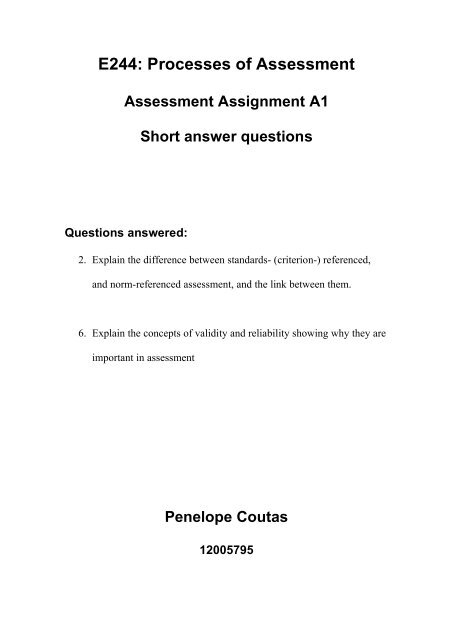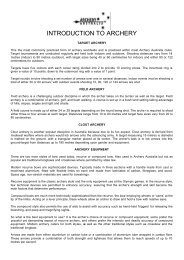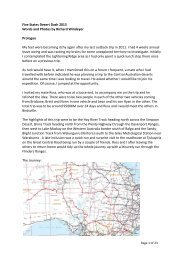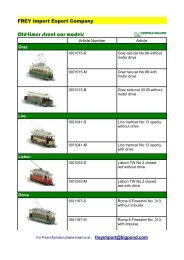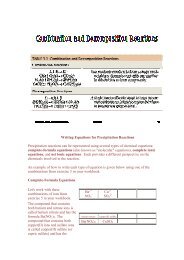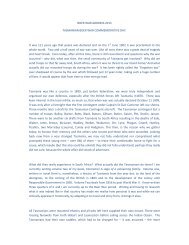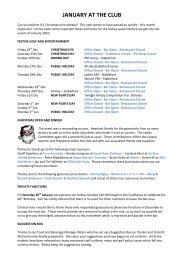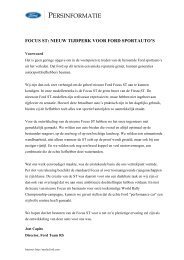Short Answer Questions
Short Answer Questions
Short Answer Questions
You also want an ePaper? Increase the reach of your titles
YUMPU automatically turns print PDFs into web optimized ePapers that Google loves.
E244: Processes of Assessment<br />
Assessment Assignment A1<br />
<strong>Questions</strong> answered:<br />
<strong>Short</strong> answer questions<br />
2. Explain the difference between standards- (criterion-) referenced,<br />
and norm-referenced assessment, and the link between them.<br />
6. Explain the concepts of validity and reliability showing why they are<br />
important in assessment<br />
Penelope Coutas<br />
12005795
Question 2: Explain the difference between standards- (criterion-)<br />
referenced, and norm- referenced assessment, and the link between<br />
them.<br />
Two types of assessment commonly used both in schools and the wider<br />
community are norm- and standards- (criterion-) referenced assessment.<br />
These two assessment forms seem quite different: norm-referenced<br />
assessment compares individuals’ performance in relation to one another,<br />
whereas standards-referenced assessment focuses on whether the set criteria,<br />
or standards, have been met. However, there is a relationship between them,<br />
as assessment is often both standards- and norm-referenced. In the following,<br />
I will explain in more detail the difference between norm- and standardsreferenced<br />
assessment, and the link between them. It is my conclusion that<br />
both forms of assessment are useful and valid, although to different extents<br />
depending on the context in which learning and teaching takes place.<br />
Norm-referenced assessment emphasises the individual differences of learners.<br />
As Biggs and Telfer (1987, p. 137) explain, ‘in norm-referenced evaluation, the<br />
final grade … is determined by how well the student compares with other<br />
students in the class.’ Learners may also be compared with established norms<br />
of achievement, such as student performance in previous years or students<br />
from another class or school. Norm-referenced measures are most useful when<br />
we want to compare individuals’ results, and often those students are given a<br />
ranking as a result. Consequently, norm-referenced evaluation emphasises<br />
competition (Biggs and Telfer, 1987, p. 137). The most prominent example of<br />
this in Western Australian schools are the Tertiary Entrance Examinations (TEE)<br />
where all students are given a competitive Tertiary Entrance Rank (TER).<br />
Smaller scale teacher measurements may also be norm-referenced. As<br />
McInerney and McInerney (1998, p. 298) describe, ‘whenever a teacher<br />
compares an individuals’ score with the average score of the class on an<br />
activity, he or she is using a norm-referenced approach’. These scores do not<br />
give specifics about what learners actually did, but represent students’<br />
achievement in relation to the standardising group at the time.<br />
A criticism of norm-referenced assessment is that the distribution of scores is<br />
generally made to follow a bell shaped curve. This is problematic because<br />
learners who perform objectively no worse than other learners in previous years<br />
or other classes may be graded lower just because their particular reference<br />
group scores higher (McInerney and McInerney, 1998, p. 298). Additionally, in<br />
order to be fair and valid, norms should reflect the background cultural, social<br />
and learning experiences of the individuals being tested. Unfortunately, this is<br />
rarely the case (McInerney and McInerney, 1998, p. 298).<br />
An alternative to norm-referenced assessment is standards-referenced<br />
assessment. This is also called criterion-referenced assessment because the<br />
focus is on whether or not learners have satisfied the set criteria. The criteria<br />
should be explicit, and may be individualised to take into account a range of
learner characteristics (McInerney and McInerney, 1998, p. 299). Criteria may<br />
also be set for a whole class (i.e., are syllabus-specific), and scores generally do<br />
not follow a bell shaped curve. Furthermore, standards-referenced assessment<br />
does not place an emphasis on competition, and often gives specifics about<br />
student achievement and progress: very useful in formative evaluation<br />
processes.<br />
Forms of evaluation that assesses whether students have achieved a particular<br />
outcome of the Curriculum Framework (1998), and to what level as indicated by<br />
The Curriculum Framework Progress Maps (2003) are examples of standardsreferenced<br />
assessment. Teachers may use a range of assessment strategies to<br />
determine whether students have met the criteria of a particular level, and<br />
hence are ready to progress to the next stage. In a multi-levelled classroom,<br />
standards-referenced assessment is often more valid than norm-referenced: if<br />
one student is working at level two and another at level four, it hardly seems<br />
fair to award them grades based on a norm-referenced approach.<br />
One link between standards- (criterion-) and norm-referenced assessments is<br />
that tests may be both standards- and norm- referenced. A student may be<br />
assessed against set criteria, but their evaluation is influenced by comparison to<br />
the work of other students. For example, this assignment has set criteria<br />
concerning whether the question has been addressed, structure, referencing<br />
and so on. However, some students may answer their chosen question better<br />
than others, and thus be awarded a higher grade according to their<br />
comparative performance.<br />
Another link between standards- and norm-referenced assessments is that<br />
criteria are often set according to the comparative work of individuals, i.e.,<br />
using norm-determined standards (Biggs and Telfer, 1987, p. 467).<br />
Theoretically in standards-referenced assessment, criteria should be set before<br />
the learning takes place and the task completed. If they are set afterwards, the<br />
criterion becomes less of a criterion than a norm (McInerney and McInerney, p.<br />
299). In many cases, the issue is one of emphasis (E244 Unit Materials, 2003,<br />
p. 1.6).<br />
Therefore, although norm- and standards-referenced assessments take quite<br />
different approaches, there is a strong relationship between them – they are<br />
constructed using similar criteria, and the extent to which an assessment is said<br />
to be norm- or standards-referenced may only be one of emphasis. In K-10<br />
classes, it is increasingly more common for teachers to use criterion-referenced<br />
assessment due to the outcomes-based nature of the curriculum. However,<br />
students are often compared to one another and competitive ranking occurs.<br />
Furthermore, due to the nature of the TEE, TEE students generally undertake<br />
more norm-referenced assessments than standards-referenced, and criteria are<br />
often norm-determined standards. Since the Curriculum Framework (1998)<br />
emphasises that judgements on student progress must be based on multiple<br />
kinds and sources of evidence, the use of both norm-referenced and standardsreferenced<br />
assessment in the classroom is pedagogically sound, although one
may be more ‘valid’ than the other, depending on the learning and teaching<br />
context.<br />
Word Count: 786.
Explain the concepts of validity and reliability showing why they are<br />
important in assessment.<br />
Assessment is an essential component of the learning and teaching process,<br />
and in order to find out what students know, value and are able to do as a<br />
result of their schooling, that assessment must be valid and reliable. In the<br />
following, I will briefly explain the concepts of validity and reliability showing<br />
why they are important in assessment. The reliability and validity of<br />
assessment is central to its usefulness for….<br />
As LeFrancois (1997, p. 469) explains, ‘probably the most important<br />
characteristic of a good test from the students’ point of view is that it be fair.<br />
Indeed, fairness is emphasised throughout the Curriculum Framework (1998),<br />
and in order to be fair, assessment must first be valid. Assessment is valid if it<br />
measures what it is intended to measure (LeFrancois, 1997, p. 469), and many<br />
types of evidence should be accrued to support the validity of those<br />
measurements (McInerney and McInerney, 1998, p. 293).<br />
There are four main types of validity in assessment: face validity, construct<br />
validity, content validity and criterion-related validity. The first, face validity,<br />
refers to whether or not the assessment appears valid on the surface. That is,<br />
it looks like it is supposed to. A maths test should look like a maths test, and a<br />
language test should follow a format familiar to language students and so on.<br />
It needs to be explicit on the face of things what is expected in the assessment<br />
in order for it to be valid (E244 Unit Materials, 2003, p. 3.3).<br />
Construct validity is often seen as ‘the essential kind of validity’ (E244 Unit<br />
Materials, 2003, p. 3.1), overarching all other aspects of validity. Indeed, it<br />
may be said that face, content and criterion validity are evidence for construct<br />
validity (E244 Unit Materials, 2003, p. 3.0). In order for assessment to have<br />
construct validity, all components of the test must reflect the intended<br />
construct.<br />
A test may be reliable, but not valid.
Works Cited<br />
Andrich, D. (Compiler) (2003) E244 Processes of Assessment: Unit Materials<br />
2003. Perth: Murdoch University.<br />
Biggs, J. B. and Telfer, R. (1987) The Process of Learning (2nd ed.). Sydney:<br />
Prentice-Hall of Australia Pty Ltd.<br />
Curriculum Council Progress Maps: working version. (2003) Curriculum Council<br />
of Western Australia. Retrieved October 30, 2003, from<br />
http://www.curriculum.wa.edu.au/ProgressMaps/index.htm.<br />
Curriculum Framework. (1998) Osborne Park, WA: Curriculum Council.<br />
Lefrancois, G. R. (1997) Psychology for Teaching (9th ed.). Belmont, California:<br />
Wadsworth.<br />
McInerney, D. M. and McInerney, V. (1998) Educational Psychology:<br />
Constructing Learning (2nd ed.). Frenchs Forest, NSW: Prentice Hall Australia<br />
Pty Ltd.


